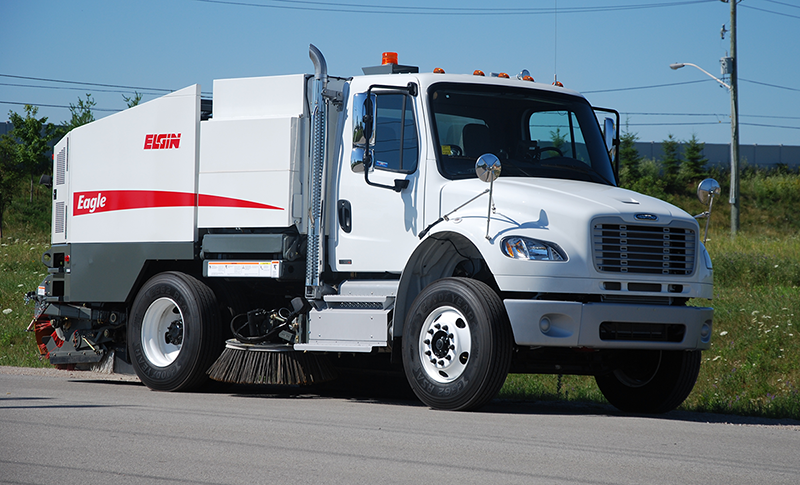How Street Sweepers Can Reduce Pollutants From Entering Waterways

Street sweepers do much more than just keep streets clean and nice to look at. When leveraged properly, and at their optimal efficiency, street sweepers are an effective water pollution control method for urban areas and a crucial part of street and sewer maintenance efforts.
There has been some controversy about whether conventional street brushing equipment can reduce the amount of pollutants carried into stormwater or are effective at collecting the fine particles that transport the largest amount of pollutants. New street sweeper models, such as the Elgin Whirlwind Vacuum Sweeper, incorporate vacuum or regenerative air technologies that improve their performance on debris and fine particle collection.
Vacuum-assisted street sweepers draw sediment dislodged by their brushes into hoppers, to be safely disposed of. Regenerative air street sweepers use blasts of air to dislodge particles in the road surface. These particles are then collected by vacuum and transported in a separation chamber that filters the air before it is discharged or reused.
How Street Sweepers Help Keep Storm Water Clean
While there are many variables, like precipitation patterns, traffic volume, and road surface conditions, that can impact the success of street sweeping on reducing pollutants in stormwater, it has been shown to help reduce the amount of mass pollutants present in street run-off. Some cities are also installing rain gardens and stormwater retention ponds to further minimize the amount of waste entering waterways.
Street sweeping removes the following waste materials from parking lots, roadways, curb gutters and other large paved areas:
- Sand
- Salt
- Leaves
- Green waste (grass and hedge clippings, etc.)
- Rubbish
- Petroleum products
- Metal and plastic
Without street sweepers, this debris would otherwise be present in the stormwater system and surface water creating hazardous conditions for both wildlife and humans. For example, green waste like grass clippings and leaves are high in nitrogen and phosphorous. Although it is biodegradable, when too much green waste is allowed to enter the storm drain system, excess levels of these chemicals result in algae blooms and water contamination.
While awareness of the environmental benefits of street sweeping is becoming more well known, many municipalities do not place enough importance on keeping hazardous waste out of sewers and surface water. It is always better to be proactive vs reactive when dealing with environmental programs.
Other Benefits of Street Sweeping
In addition to the environmental impact of outdoor street sweeping, there are other benefits to regular street cleaning. Keeping streets clear of debris is not only aesthetically pleasing, it prevents overflow and clogging issues in storm drains and sewers. During periods of heavy rain or snowmelt, clear storm drains are a crucial way to avoid flooding, and in cold areas, ice issues.
Compared to manual labor, street sweepers are by far the most affordable solution for street cleaning. These complex machines can clean faster and more efficiently, making them well worth the investment and maintenance costs.
